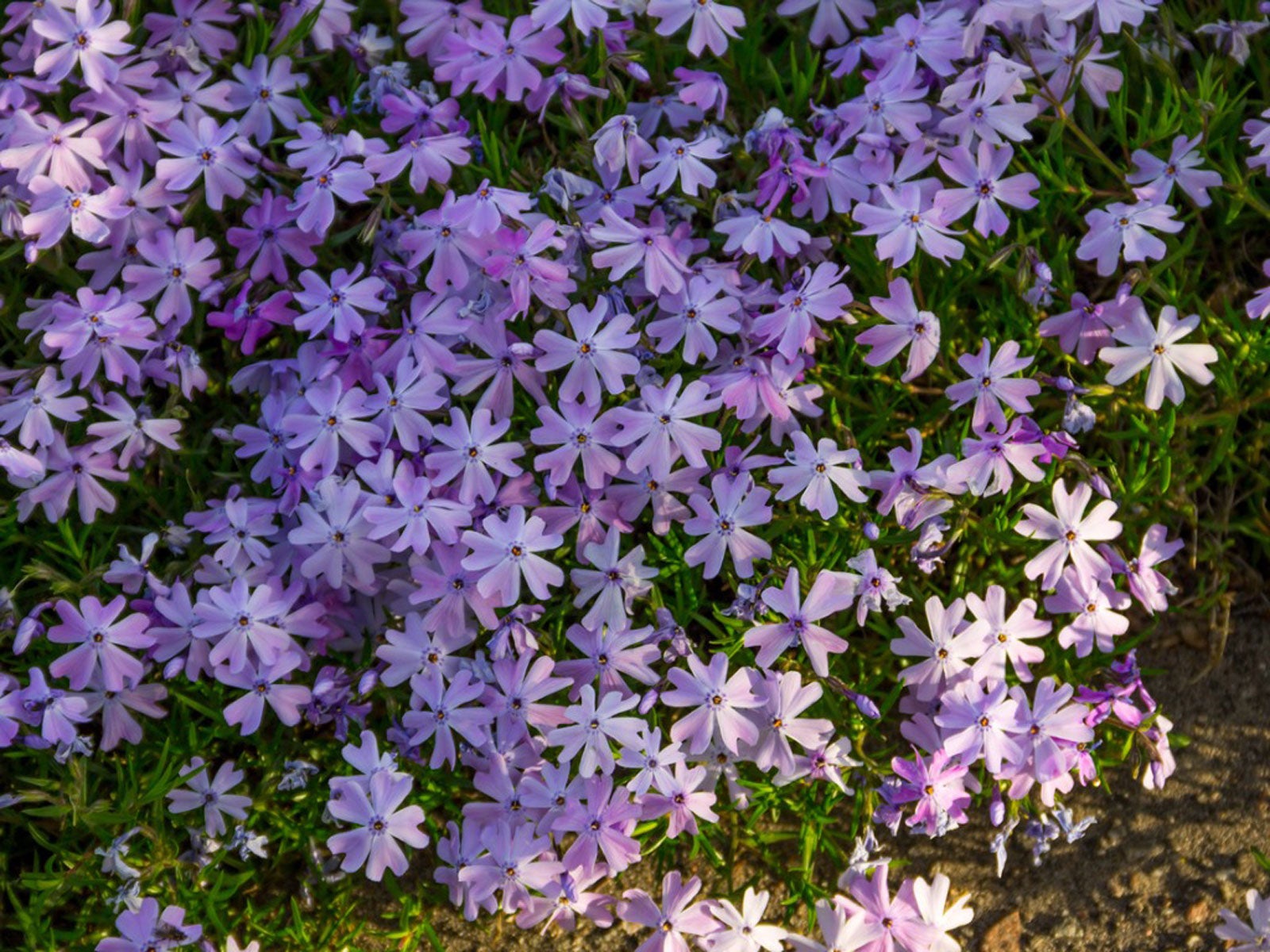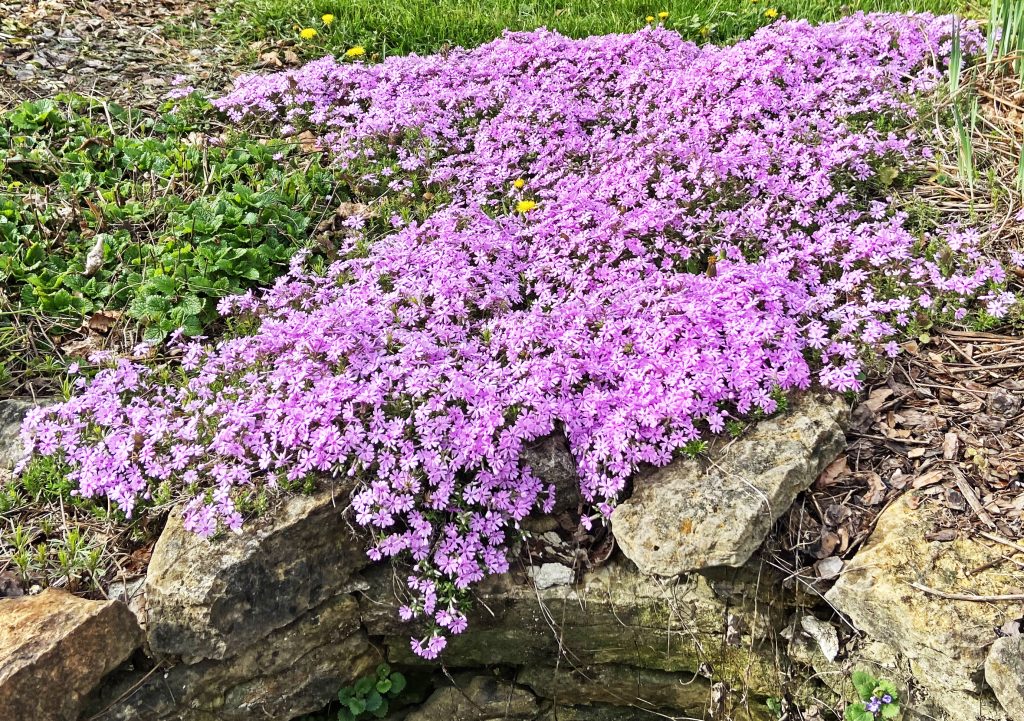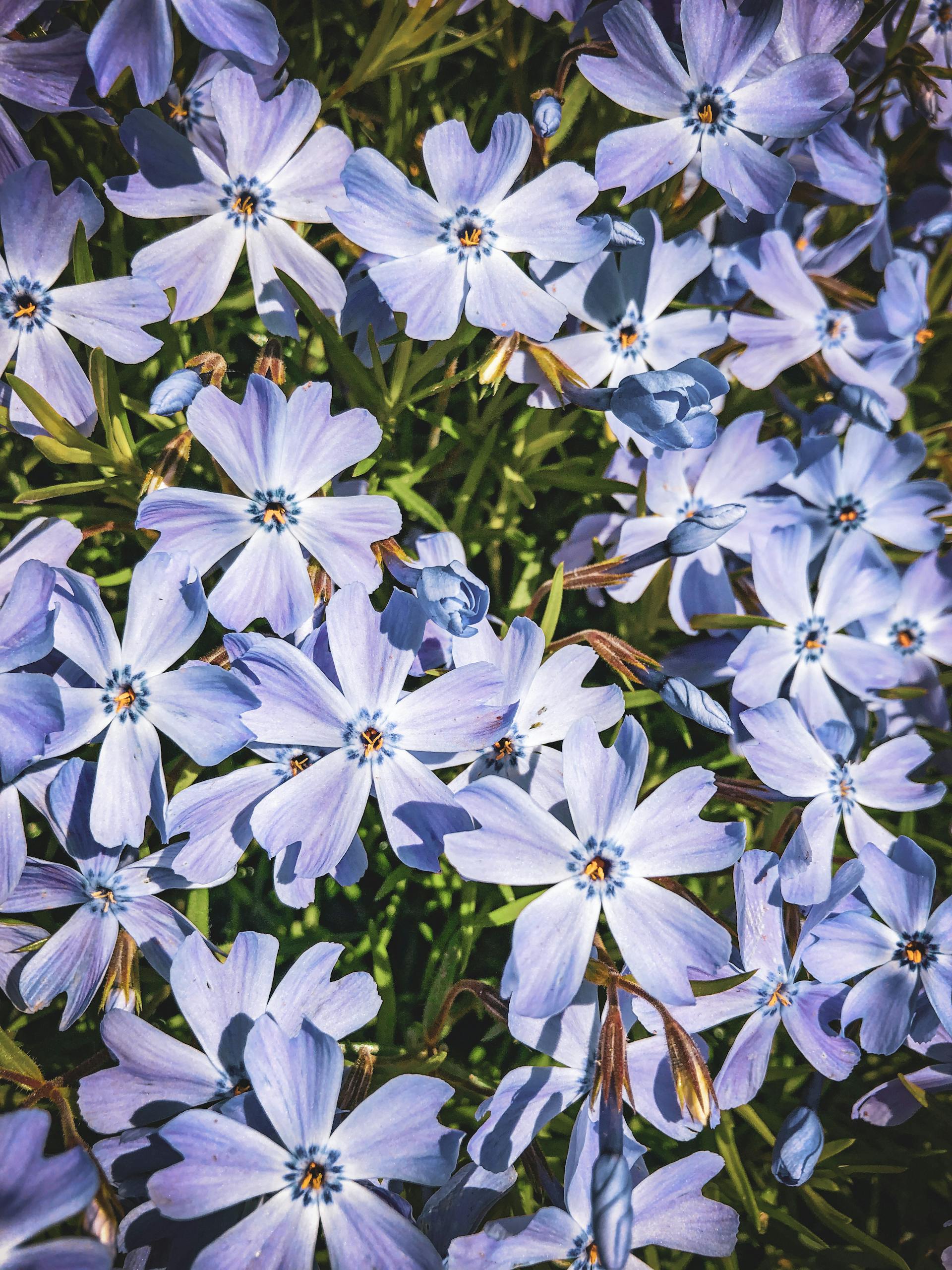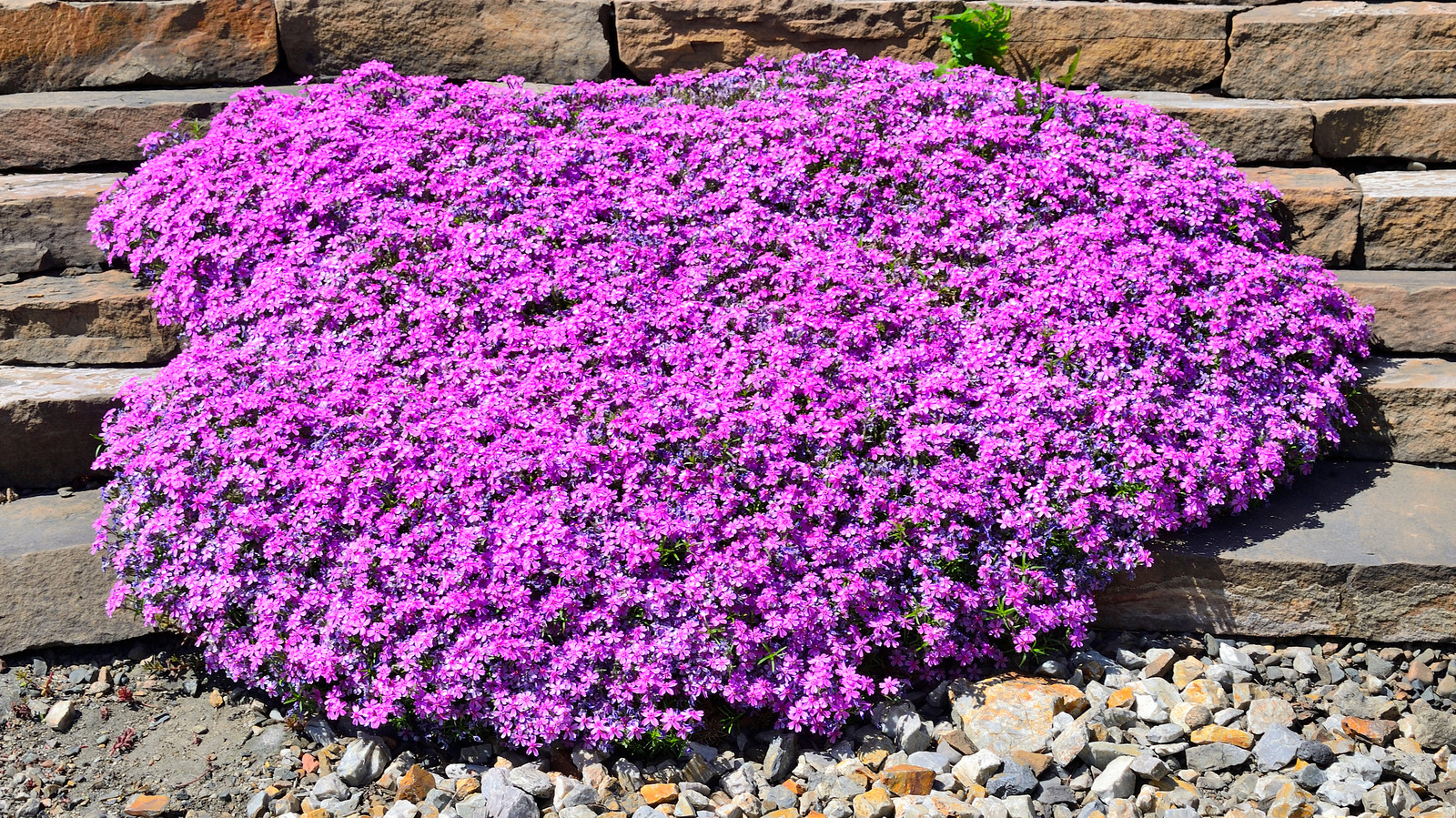Why Creeping Phlox is an Ideal Choice for Slopes
When it comes to landscaping a slope, one of the biggest challenges is finding a groundcover that can thrive in the unique conditions. Creeping phlox (Phlox subulata) is an excellent choice for slopes due to its ability to prevent erosion, create a beautiful display of color, and require minimal maintenance. This low-growing, spreading groundcover is perfect for slopes because it can tolerate a range of soil conditions and can help to stabilize the soil, preventing erosion and landslides.
One of the main benefits of using creeping phlox on a slope is its ability to create a beautiful display of color. In the spring, creeping phlox produces masses of small, fragrant flowers in shades of pink, purple, and white, which attract pollinators and add a pop of color to the landscape. Additionally, the foliage of creeping phlox is a attractive, with narrow, pointed leaves that are a deep green color.
Another advantage of using creeping phlox on a slope is its low maintenance requirements. This groundcover is drought-tolerant and can thrive in poor soil, making it an excellent choice for slopes where soil quality may be poor. Additionally, creeping phlox requires minimal pruning and care, making it an excellent choice for busy homeowners or those who want a low-maintenance landscape.
When considering how to plant creeping phlox on a slope, it’s essential to keep in mind the unique conditions of the landscape. Slopes can be prone to erosion, and creeping phlox can help to stabilize the soil and prevent landslides. By choosing the right location and using proper planting techniques, homeowners can create a beautiful and thriving slope garden that requires minimal maintenance.
Preparing the Slope for Planting
Before planting creeping phlox on a slope, it’s essential to prepare the area properly to ensure successful establishment and growth. One of the most critical steps in preparing the slope is to remove any weeds or debris that may be present. This can be done by hand or with the help of a weeding tool, and it’s crucial to remove the entire root system to prevent regrowth.
Once the weeds have been removed, the next step is to loosen the soil to a depth of about 8-10 inches. This can be done using a garden fork or tiller, and it will help to improve drainage and aeration in the soil. If the soil is heavy clay or sandy, it may be necessary to add organic matter such as compost or well-rotted manure to improve its structure and fertility.
In addition to loosening the soil, it’s also important to check the pH level and adjust it if necessary. Creeping phlox prefers a slightly acidic to neutral soil pH, ranging from 6.0 to 7.0. If the soil pH is too high or too low, it may be necessary to add lime or sulfur to adjust it.
Finally, it’s essential to ensure that the slope is stable and secure before planting creeping phlox. This can be done by installing erosion-control measures such as geotextiles or terracing, which will help to prevent soil loss and landslides. By taking the time to properly prepare the slope, homeowners can create a stable and thriving environment for their creeping phlox to grow.
How to Plant Creeping Phlox on a Slope
Planting creeping phlox on a slope requires careful planning and execution to ensure successful establishment and growth. Here’s a step-by-step guide on how to plant creeping phlox on a slope:
Step 1: Choose the Right Location – When selecting a location for your creeping phlox, choose an area that receives full sun to partial shade and has well-draining soil. Avoid planting in areas with standing water or where water tends to collect.
Step 2: Prepare the Soil – Before planting, prepare the soil by loosening it to a depth of about 8-10 inches. Add organic matter such as compost or well-rotted manure to improve soil fertility and drainage.
Step 3: Plant the Creeping Phlox – Plant the creeping phlox plants 12-18 inches apart, depending on the variety. Dig a hole that is twice as wide and just as deep as the root ball of the plant. Gently remove the plant from its container and place it in the hole. Backfill with soil and gently firm it around the roots.
Step 4: Water and Mulch – Water the plants thoroughly after planting and apply a layer of mulch to retain moisture and suppress weeds. Keep the soil consistently moist during the first growing season.
Step 5: Monitor and Maintain – Keep an eye on your creeping phlox plants and monitor their growth. Prune them regularly to maintain shape and promote healthy growth. Fertilize lightly in the spring with a balanced fertilizer.
By following these steps and tips, you can successfully plant creeping phlox on a slope and enjoy its beautiful display of color and low-maintenance benefits. Remember to plant creeping phlox in the spring or fall, when the weather is cooler, to ensure the best results.
Tips for Planting Creeping Phlox on Steep Slopes
Planting creeping phlox on steep slopes requires extra care and attention to ensure successful establishment and growth. Here are some additional tips and considerations to keep in mind:
Use Erosion-Control Measures – Steep slopes can be prone to soil erosion, which can lead to soil loss and landslides. To prevent this, consider using erosion-control measures such as geotextiles or terracing. These measures can help to stabilize the soil and prevent erosion.
Choose the Right Variety – When planting creeping phlox on a steep slope, choose a variety that is specifically bred for slope stabilization. These varieties tend to have deeper roots and are more resistant to erosion.
Plant in a Grid Pattern – Planting creeping phlox in a grid pattern can help to prevent soil erosion and promote healthy growth. This pattern allows for good air circulation and sunlight penetration, which can help to prevent disease and promote healthy growth.
Use a Soil Stabilizer – Soil stabilizers such as polyacrylate or polyacrylamide can help to prevent soil erosion and promote healthy growth. These products work by binding the soil particles together, creating a more stable soil structure.
Monitor and Maintain – Regular monitoring and maintenance are crucial when planting creeping phlox on a steep slope. Keep an eye out for signs of erosion or soil instability, and take action promptly to prevent further damage.
By following these tips and considerations, you can successfully plant creeping phlox on a steep slope and enjoy its beautiful display of color and low-maintenance benefits. Remember to always follow proper planting and care techniques to ensure the best results.
Caring for Creeping Phlox on a Slope
Caring for creeping phlox on a slope requires regular maintenance and upkeep to ensure its health and promote optimal growth. Here are some tips to help you care for your creeping phlox:
Watering – Creeping phlox requires consistent moisture, especially during the first growing season. Water the plants regularly, but avoid overwatering, which can lead to root rot and other problems.
Fertilizing – Fertilize your creeping phlox in the spring with a balanced fertilizer. This will provide the necessary nutrients for healthy growth and flowering.
Pruning – Prune your creeping phlox regularly to maintain its shape and promote healthy growth. Remove any dead or damaged stems, and trim back the plant to encourage new growth.
Pest and Disease Control – Keep an eye out for pests and diseases that can affect creeping phlox, such as aphids, spider mites, and powdery mildew. Use organic or chemical controls as needed to prevent infestations and infections.
Soil Maintenance – Creeping phlox prefers well-draining soil that is rich in organic matter. Add compost or well-rotted manure to the soil regularly to maintain its fertility and drainage.
By following these care tips, you can keep your creeping phlox healthy and thriving on your slope. Remember to monitor your plants regularly and take action promptly if you notice any problems.
Common Challenges and Solutions for Planting Creeping Phlox on a Slope
While creeping phlox is a low-maintenance groundcover, there are some common challenges that may arise when planting it on a slope. Here are some of the most common challenges and solutions to overcome them:
Soil Erosion – One of the most common challenges when planting creeping phlox on a slope is soil erosion. To prevent this, use erosion-control measures such as geotextiles or terracing to stabilize the soil.
Poor Drainage – Poor drainage can be a problem on slopes, especially if the soil is heavy clay or prone to waterlogging. To improve drainage, add organic matter such as compost or well-rotted manure to the soil, and consider installing a French drain or other drainage system.
Weed Competition – Weeds can be a problem on slopes, especially if the soil is fertile and well-draining. To prevent weed competition, use a pre-emergent herbicide or mulch to suppress weed growth, and consider using a weed barrier fabric to prevent weeds from growing up through the soil.
Pests and Diseases – Creeping phlox can be susceptible to pests and diseases such as aphids, spider mites, and powdery mildew. To prevent infestations and infections, use organic or chemical controls as needed, and maintain good garden hygiene practices such as removing weeds and debris.
By being aware of these common challenges and taking steps to prevent them, you can ensure a successful and thriving creeping phlox slope garden. Remember to monitor your plants regularly and take action promptly if you notice any problems.
Combining Creeping Phlox with Other Plants for a Beautiful Slope Garden
While creeping phlox is a beautiful and low-maintenance groundcover on its own, it can also be combined with other plants to create a stunning and diverse slope garden. Here are some ideas for combining creeping phlox with other plants:
Shrubs – Shrubs such as boxwood, holly, and rhododendron can provide a nice contrast in texture and height to creeping phlox. They can also provide a framework for the creeping phlox to grow up and around.
Trees – Trees such as oak, maple, and pine can provide shade and structure to a slope garden. They can also provide a nice backdrop for the creeping phlox to grow in front of.
Perennials – Perennials such as coneflower, black-eyed Susan, and bee balm can add a pop of color and interest to a slope garden. They can also attract pollinators and provide a source of food for wildlife.
Grasses – Ornamental grasses such as pampas grass and fountain grass can add a nice texture and movement to a slope garden. They can also provide a nice contrast to the creeping phlox.
By combining creeping phlox with other plants, you can create a beautiful and diverse slope garden that attracts pollinators and provides year-round interest. Remember to choose plants that have similar growing conditions and requirements to ensure a thriving and low-maintenance garden.
Maintenance and Upkeep for a Thriving Creeping Phlox Slope Garden
Regular maintenance and upkeep are crucial for a thriving creeping phlox slope garden. Here are some tips to help you keep your garden looking its best:
Monitor for Pests and Diseases – Keep an eye out for pests and diseases that can affect creeping phlox, such as aphids, spider mites, and powdery mildew. Use organic or chemical controls as needed to prevent infestations and infections.
Perform Periodic Pruning – Prune your creeping phlox regularly to maintain its shape and promote healthy growth. Remove any dead or damaged stems, and trim back the plant to encourage new growth.
Fertilize Regularly – Fertilize your creeping phlox regularly to promote healthy growth and flowering. Use a balanced fertilizer that is high in phosphorus to encourage root growth and flowering.
Water Wisely – Water your creeping phlox regularly, but avoid overwatering, which can lead to root rot and other problems. Water at the base of the plant to avoid getting the leaves wet, which can lead to fungal diseases.
Mulch Around the Plants – Mulch around the plants to retain moisture, suppress weeds, and regulate soil temperature. Use a thin layer of organic mulch such as wood chips or bark, and keep it a few inches away from the plant stems.
By following these maintenance and upkeep tips, you can keep your creeping phlox slope garden looking its best and ensure its continued health and success.







